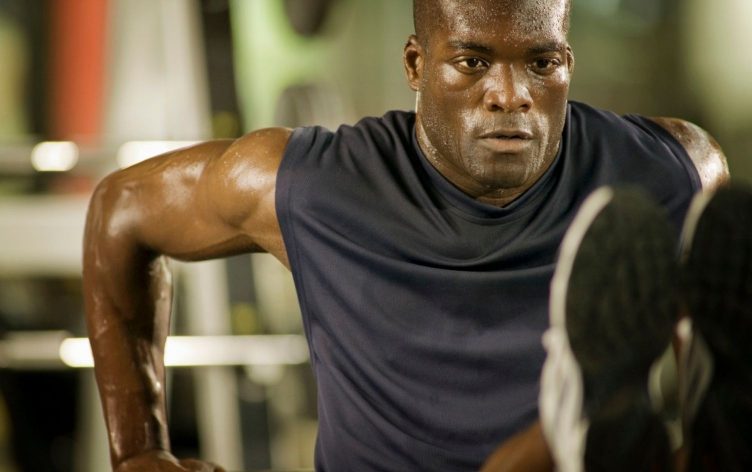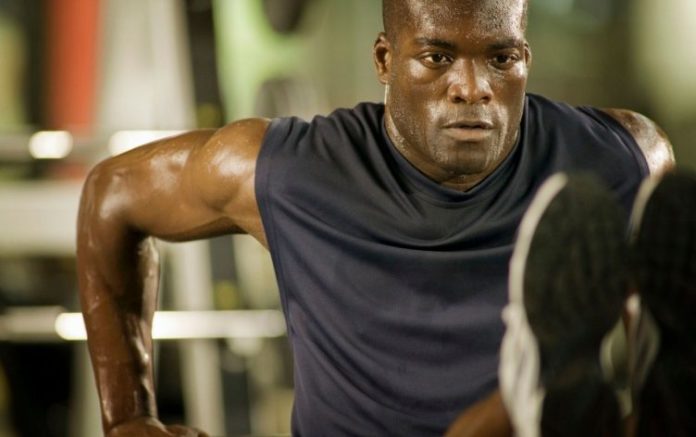
With so many acronyms being thrown around all the time, talking about fitness can be like learning a secret code. However, once you’ve cracked the most common ciphers, you’ll be able to speak “fitness” like a pro.
Here, experts demystify the workout acronyms you’ll likely encounter in conversations with personal trainers and other fit-minded folks.
1
AMRAP
Stands for: As Many Reps/Rounds As Possible
AMRAP is a method of structuring your workout to make it high-intensity and/or add a cardio component to a strength workout, says William Kelley, DPT, and owner of Aries Physical Therapy in Fort Lauderdale, Florida.
To do an AMRAP, simply perform as many reps of an exercise (e.g., squats, pushups, lunges), or as many rounds of multiple exercises as you can in a given time period, resting if and when needed. “I love AMRAP for when you’re tight on time,” says Alison Heilig, a certified running coach and NASM-certified personal trainer. For example, if you only have 20 minutes to work out, you can set a timer and complete as many rounds of 10 pushups, 20 situps and 30 bodyweight squats as you can in that amount of time.
Try it: 7-Minute Total-Body Dumbbell Workout, 10-Move Total Body At-Home Workout and 4-Week Progressive Bodyweight Workout
2
EMOM
Stands for: Every Minute on the Minute
Like an AMRAP, an EMOM is a way to structure your workouts. “These are used to really push the cardio component of a workout. EMOMs require you to push yourself through the rep count every minute so you are constantly hustling toward a deadline,” Kelley says.
An EMOM can be done in two different ways: You can do a set number of reps of an exercise within one minute, and then use the remainder of the time to rest. This method encourages you to work fast so you get more time to rest. Or, you can do as many reps of an exercise as possible within one minute, and then switch to a different exercise the next minute. “The second way usually contains a designated minute for rest to account for the intensity of going the full minute in the other minutes,” Kelley says.
Try it: 15-Minute EMOM Workout With Nik Naidoo
3
EPOC
Stands for: Excess Post-Exercise Oxygen Consumption
EPOC, also commonly known as “afterburn,” refers to the amount of oxygen your body needs to restore and repair post-workout. Once you’re done with your workout, your body uses oxygen to replace any fuel you used, cool you off, repair damaged muscle tissue, and bring more oxygen into your blood. All that recovery work uses energy, or calories, and the more oxygen you need to restore your body, the more calories you’ll burn. Typically, HIIT and other high-intensity workouts create the highest demand for oxygen post-workout.
But, while one study suggests EPOC can last up to 72 hours, it’s hard to say how long that elevated calorie burn will last for you, or how many extra calories you’ll burn through EPOC.
4
HIIT
Stands for: High-Intensity Interval Training
HIIT is a popular training method, but there’s some confusion over the term. Often, people will refer to any intense workout as HIIT, whereas an actual HIIT workout is a little more specific. “Technically, to qualify as high-intensity interval training, you have to work close to your max effort for a short period of time, take a break, and then get back to work,” Heilig says. For example, you might sprint for 20 seconds, rest 60 seconds, and then repeat for 4–6 sets. Another popular example is Tabata training, which is typically 20 seconds on, 10 seconds off for 8 rounds. “The idea here is, during those 20 seconds, you’re giving everything you have,” Heilig says.
5
HRV
Stands for: Heart Rate Variability
Heart rate variability is a measure of the variation in time between each heartbeat, and it is the best way to keep tabs on your training readiness, Kelley says. In fact, many fitness watches and apps allow you to measure and track your HRV score over time.
Your HRV is influenced by things like sleep quality and quantity, work and life stress, and the prior days’ training, giving you an objective idea of how ready you are to handle the stress of exercise.
“The variation in your heartbeat is controlled by your autonomic nervous system,” Heilig says. This is the part of your nervous system that triggers your “fight-or-flight” response during times of stress, and eases you into “rest-and-digest” when that stress goes away.
A high HRV score means greater variability in the time between heartbeats, and may indicate a healthier, more balanced nervous system. “If the nervous system is resilient, you’re able to fluidly move from that ‘fight-or-flight’ response into ‘rest-and-digest’ where your body functions return to normal,” Heilig says.
A low HRV score, on the other hand, means you’re not moving between these two states the way you should, likely because you’re handling too much stress. If your HRV score is low, you may need to take a day off from exercise, lower the intensity of your workout and/or incorporate more stress-management techniques into your life.
6
MHR
Stands for: Maximum Heart Rate
As the name suggests, MHR is a measure of the average maximum number of times your heart should beat per minute during exercise. If you know your MHR, you can calculate heart rate zones to get an objective measure of how hard you should be working when exercising at different intensities. Then, using a heart rate monitor (many fitness watches have them built-in), you can keep tabs on your intensity during your workout. If you want to keep your workout moderate-intensity, for example, stick to 64–76% of your MHR, as recommended by the Centers for Disease Control and Prevention (CDC).
The most accurate way to find your max heart rate sans technology is to multiply your age (in years) by 0.66. Then, subtract that number from 220 to get your estimate.
7
PR
Stands for: Personal Record
Chances are you’ve heard professional athletes refer to their PRs, or personal records. This is simply a person’s best performance in a given sport or activity. Runners hit a PR when they cover a distance more quickly than their previous best, and weightlifters PR when they move as much weight as they can in a given lift, or reach a new maximum number of reps (e.g., going from 100 pushups in a row to 150).
Keeping track of your own PRs is a great way to measure your progress, and helps motivate you to stick with your routine. “It’s nice to know that the effort I’m putting in is paying off, and a PR is a really great way to see it,” Heilig says.
8
RPE
Stands for: Rate of Perceived Exertion
Unlike MHR and heart rate zones, RPE offers a subjective way of gauging your workout intensity; you just rate how hard you feel like you’re working on a scale of 0–10, where 0 means you’re lying on the couch, and “10 is you can’t possibly imagine working any harder than you are,” Heilig says. (Accordingly, a 5 means you’re working at roughly 50% of your maximum effort, a 6 means 60%, and so on.) You can use the RPE scale to figure out if you’re working at the intensity your workout calls for (e.g., you should be at a 9 or 10 during HIIT intervals).
The RPE scale is also useful for times when you’re short on sleep, dehydrated, stressed out and/or the humid weather is making your “easy” run or weight session (5 or 6 on the RPE scale) feel harder than usual. Instead of letting your ego get in the way and trying to hit your usual distance, pace and/or weight when you’re not feeling your best, you can adjust your workout variables as-needed so your “easy” workout stays within that 5–6 range, according to Kelley.
Check out “Workout Routines” in the MyFitnessPal app to discover and log workouts or build your own with exercises that fit your goals.
















